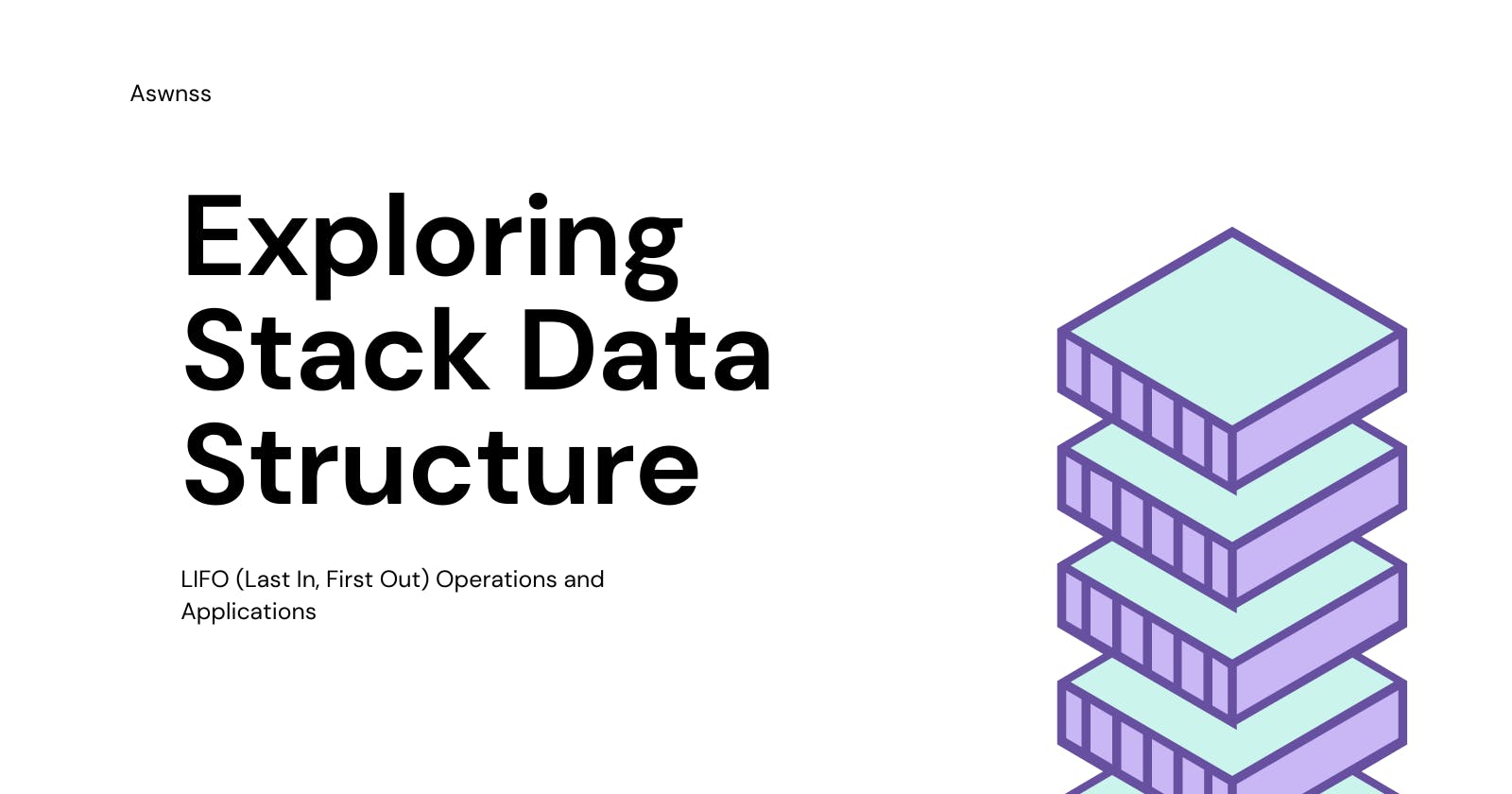Exploring Stack Data Structure: LIFO (Last In, First Out) Operations and Applications
Introduction: In the world of data structures, the stack is a fundamental concept that plays a crucial role in various programming applications. A stack is a dynamic data structure that follows the LIFO (Last In, First Out) principle, where the last element added to the stack is the first one to be removed. In this blog post, we will dive into the world of stacks, exploring their operations, implementation, and practical applications. Understanding the stack data structure will enable you to leverage its power in solving complex problems efficiently.
Stack Operations: Stacks support three fundamental operations:
Push: Adding an element to the top of the stack.
Pop: Removing the topmost element from the stack.
Peek: Viewing the topmost element without removing it.
These operations make the stack an efficient structure for managing data that requires LIFO behavior. Let's take a closer look at these operations and their implementation using code snippets.
class Stack:
def __init__(self):
self.stack = []
def push(self, item):
self.stack.append(item)
def pop(self):
if not self.is_empty():
return self.stack.pop()
else:
return None
def peek(self):
if not self.is_empty():
return self.stack[-1]
else:
return None
def is_empty(self):
return len(self.stack) == 0
Stack Applications: Stacks find applications in various programming scenarios, including:
Function Call Stack: Stacks are used to manage function calls, storing return addresses and local variables. This enables the execution of nested function calls and proper handling of function returns.
Expression Evaluation: Stacks play a vital role in evaluating arithmetic expressions, parsing infix, postfix, and prefix notations, and maintaining operator precedence.
Undo/Redo Operations: Stacks provide a convenient way to implement undo/redo functionality in applications by maintaining a history of operations.
Backtracking and Depth-First Search: Stacks are widely used in backtracking algorithms and depth-first search (DFS) to explore all possible paths or states.
Example: Balanced Parentheses As an example, let's explore how stacks can help solve the problem of checking balanced parentheses in an expression. The algorithm involves using a stack to keep track of opening parentheses and popping them when encountering a closing parenthesis.
def is_balanced(expression):
stack = Stack()
for char in expression:
if char == "(":
stack.push(char)
elif char == ")":
if stack.is_empty():
return False
stack.pop()
return stack.is_empty()
Conclusion: In this blog post, we have delved into the stack data structure, understanding its LIFO operations and practical applications. The stack's simplicity and efficiency make it a powerful tool in various programming scenarios, including function call management, expression evaluation, undo/redo operations, and backtracking algorithms. By grasping the concepts and implementations of stacks, you can leverage their capabilities to solve complex problems effectively.
